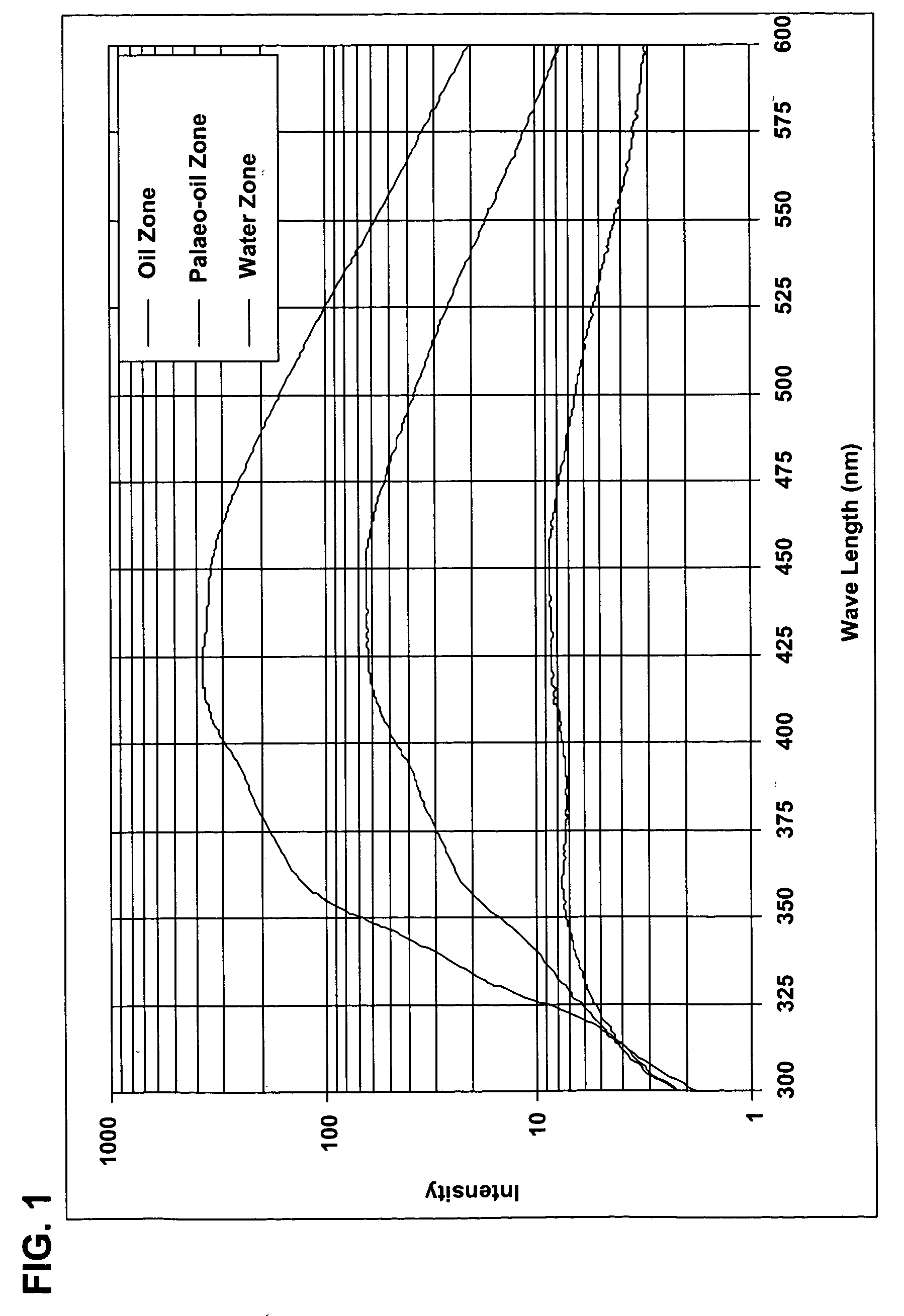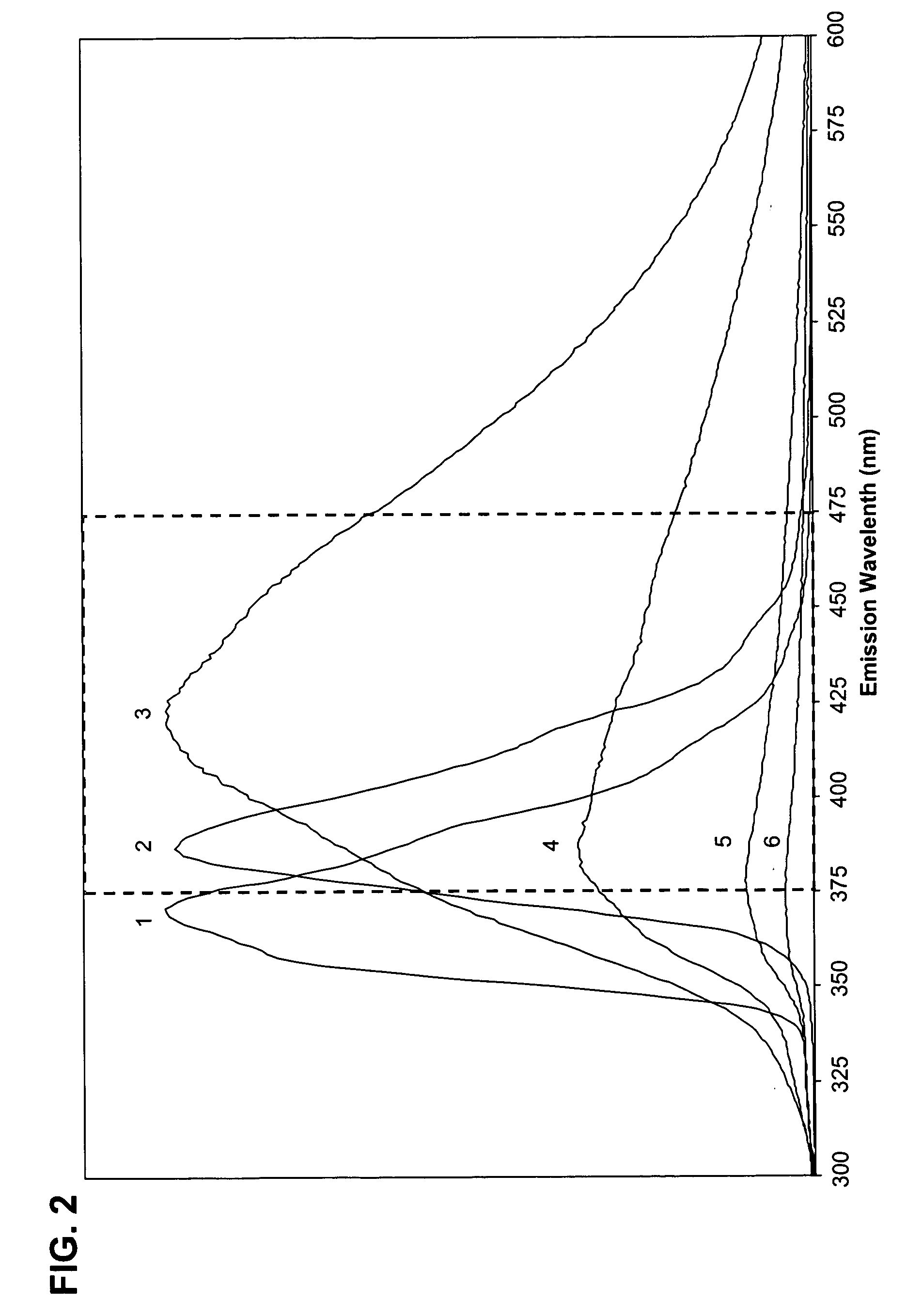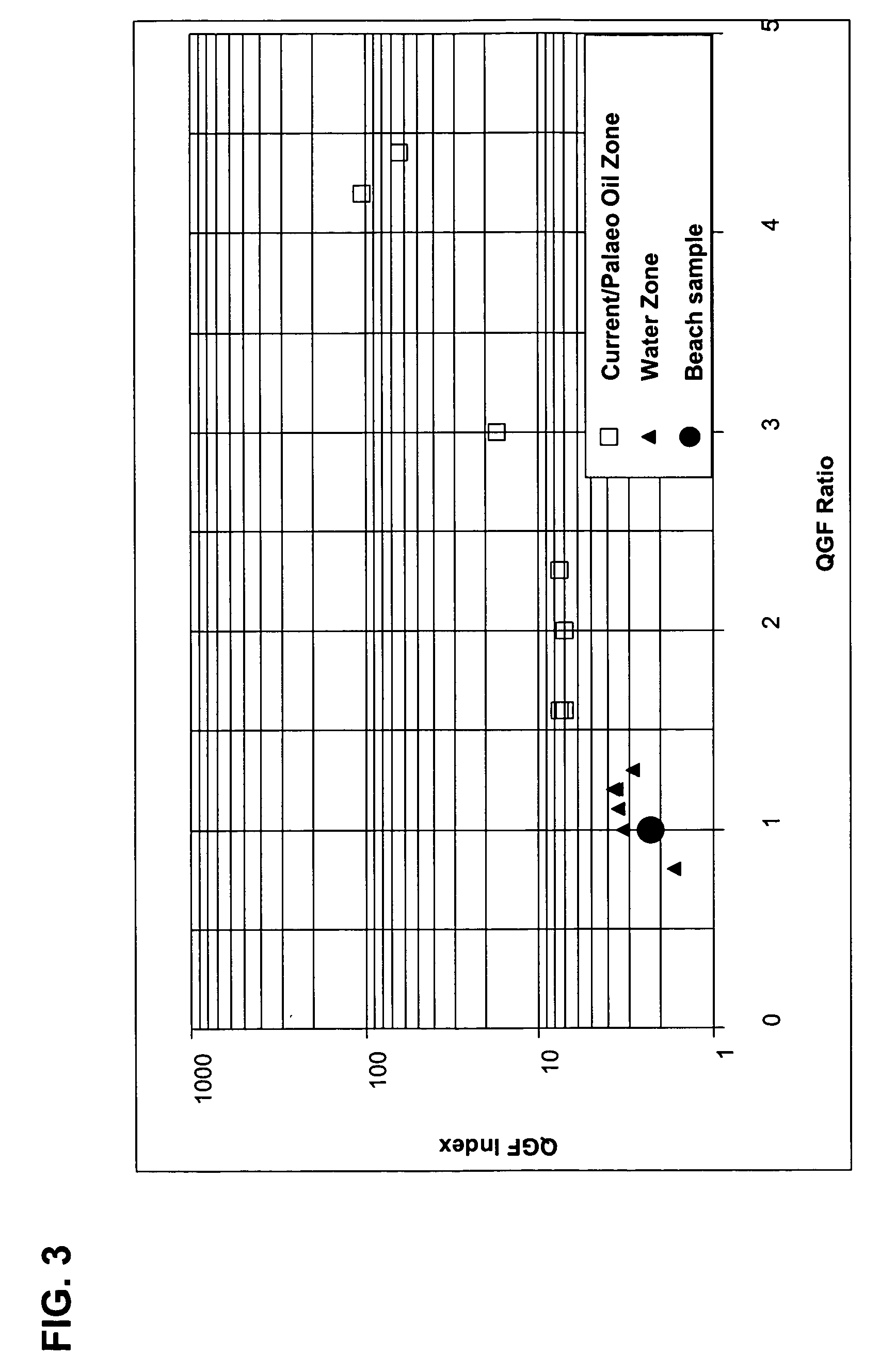Method for determining whether a rock is capable of functioning as an oil reservoir
a technology of oil reservoir and rock, which is applied in the direction of fluorescence/phosphorescence, analysis by material excitation, instruments, etc., can solve the problems of inability to always adequately detect, the residual oil is less than the sensitivity, and the method is too expensive to implement on every exploration well, etc., to achieve less contamination prone, less sensitivity, and more robust configuration
- Summary
- Abstract
- Description
- Claims
- Application Information
AI Technical Summary
Benefits of technology
Problems solved by technology
Method used
Image
Examples
example 1
The Quantitative Grain Fluorescence (QGF) Method
[0062]The QGF method was developed to provide the oil industry with a cost-effective, rapid and simple screening technique, primarily to detect palaeo oil zones within reservoir rocks (being the zones that may indicate commercial oil quantity elsewhere in the reservoir). The method measured the intensity of fluorescence emitted from rock grains under UV excitation after washing with solvent and digestion with hydrogen peroxide to remove any undrained oil or weakly adsorbed compounds. The rock samples were taken at a depth interval within an oil well using the procedures described below. Interpretation of the QGF intensity profile or QGF Index profile, and presence or absence of spectral peaks, determined whether the samples were from an oil zone, a palaeo oil zone or oil migration pathway in the interval of rock formation investigated.
[0063]In the QGF technique palaeo oil zones were identified as zones with fluorescence intensity from ...
example 2
[0099]QGF-E (Quantitative Grain Fluorescence-Extract) was developed to detect zones currently containing oil by making measurements on samples of core and cuttings from oil wells. In favourable circumstances (with good reservoir quality and high oil saturation) the oil was producible. The QGF-E technique was a variant of the QGF (Quantitative Grain Fluorescence) technique to detect palaeo oil zones.
[0100]The QGF-E procedure involved measuring by fluorescence spectrophotometer the fluorescence spectrum of dissolved hydrocarbons in dichloromethane extracted from sedimentary grains in samples of core or cuttings after they had been cleaned by a predetermined procedure (described in more detail below). The cleaning steps were water wash, dichloromethane wash, hydrogen peroxide digestion and hydrochloric acid digestion, after which the sample was extracted by dichloromethane and the fluorescence spectrum of dissolved hydrocarbons was measured. The cleaning of the sample prior to solvent ...
PUM
| Property | Measurement | Unit |
|---|---|---|
| wavelengths | aaaaa | aaaaa |
| wavelengths | aaaaa | aaaaa |
| wavelengths | aaaaa | aaaaa |
Abstract
Description
Claims
Application Information
 Login to View More
Login to View More - R&D
- Intellectual Property
- Life Sciences
- Materials
- Tech Scout
- Unparalleled Data Quality
- Higher Quality Content
- 60% Fewer Hallucinations
Browse by: Latest US Patents, China's latest patents, Technical Efficacy Thesaurus, Application Domain, Technology Topic, Popular Technical Reports.
© 2025 PatSnap. All rights reserved.Legal|Privacy policy|Modern Slavery Act Transparency Statement|Sitemap|About US| Contact US: help@patsnap.com



